Sudavik
Tours & GuesthouseAbout the Arctic Fox in Iceland
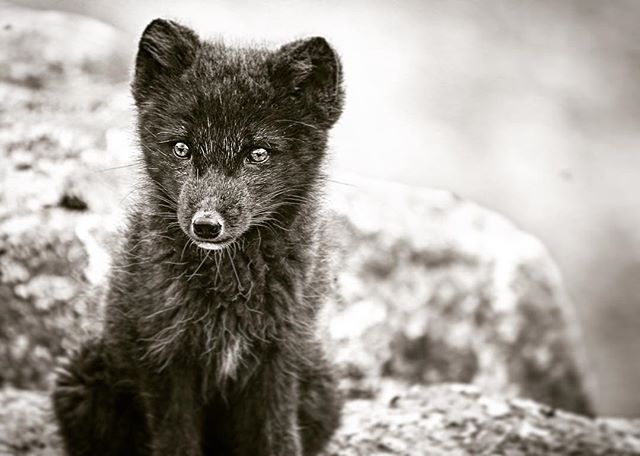

About the Arctic Fox in Iceland
There are currently around 8000 Arctic foxes in Iceland, including 2000 in the Westfjords. Many believe that Horstrandir contains most of the fox population, but although the concentration is the highest in the world, its population is lower than that of the rest of the fjords because there are only 180 Arctic foxes in this area.
About the fur of the arctic fox
There are three kinds of fur color in Iceland, the white, the blue and the beige. The blue form is the most common in Iceland while the white one is the most common in the rest of the world. Generally blue foxes come from the fjords while whites ones come from the highlands, their fur is adapted to their environment.
The fur of the polar fox is very effective in protecting it from the cold. Canadian researchers have conducted studies on the resistance of arctic foxes to cold weather. They observed a decrease in activity at -70 ° C and a cessation of their activity at -120 ° C*.
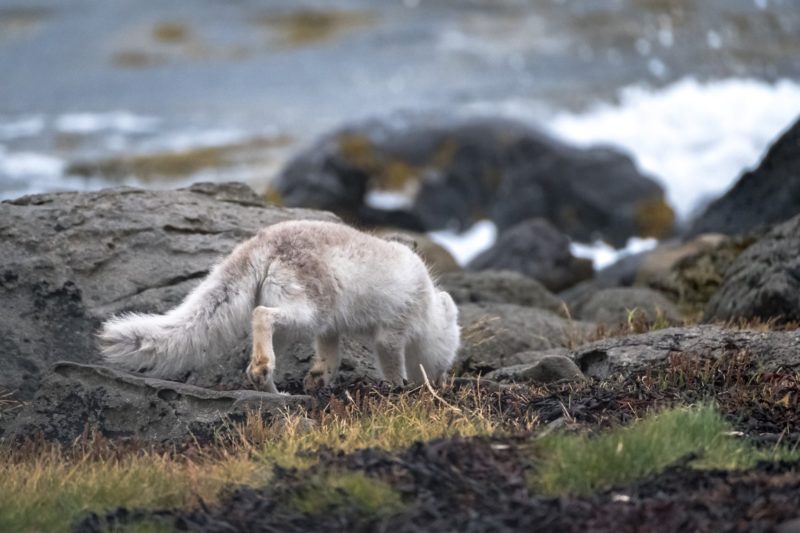
White fox at the end of summer

Arctic Fox cubs
About the cubs and the reproduction
The peculiarity in Iceland is that the food is more diversified than in the polar regions and that their reproduction rate is not linked to that of lemmings. Also, they have a reach per year.
The act of reproduction occurs at the end of March and the gestation lasts 52 days. The foxes come out of the burrow nose around mid-June. Foxes have three months to become self-reliant and their learning is essentially game-related.
Habitat and food
Their food depends on their geographical location. At the top of the plateaus, they feed on ptarmigans while at the seaside they forage at low tide to find mussels, néréïdes, sea urchins and the waste of the sea. They also feed on sea birds and various other birds.
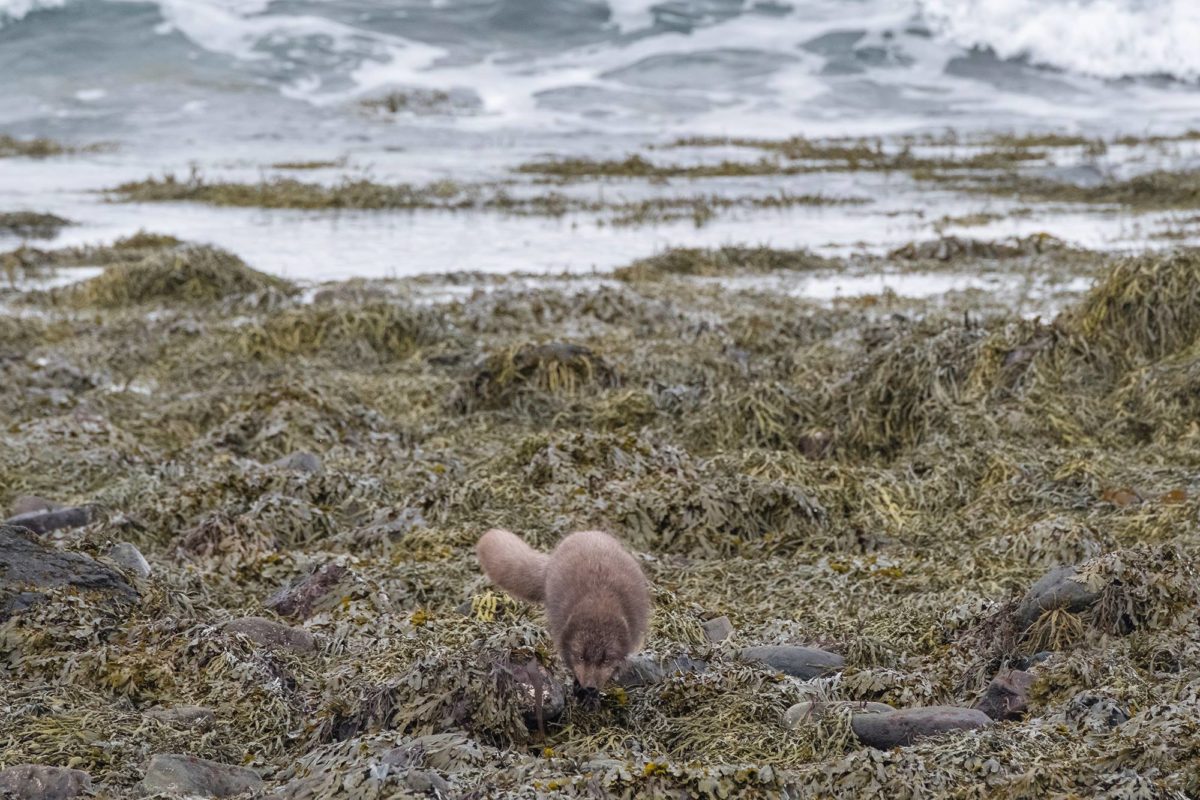
Arctic Fox foraging
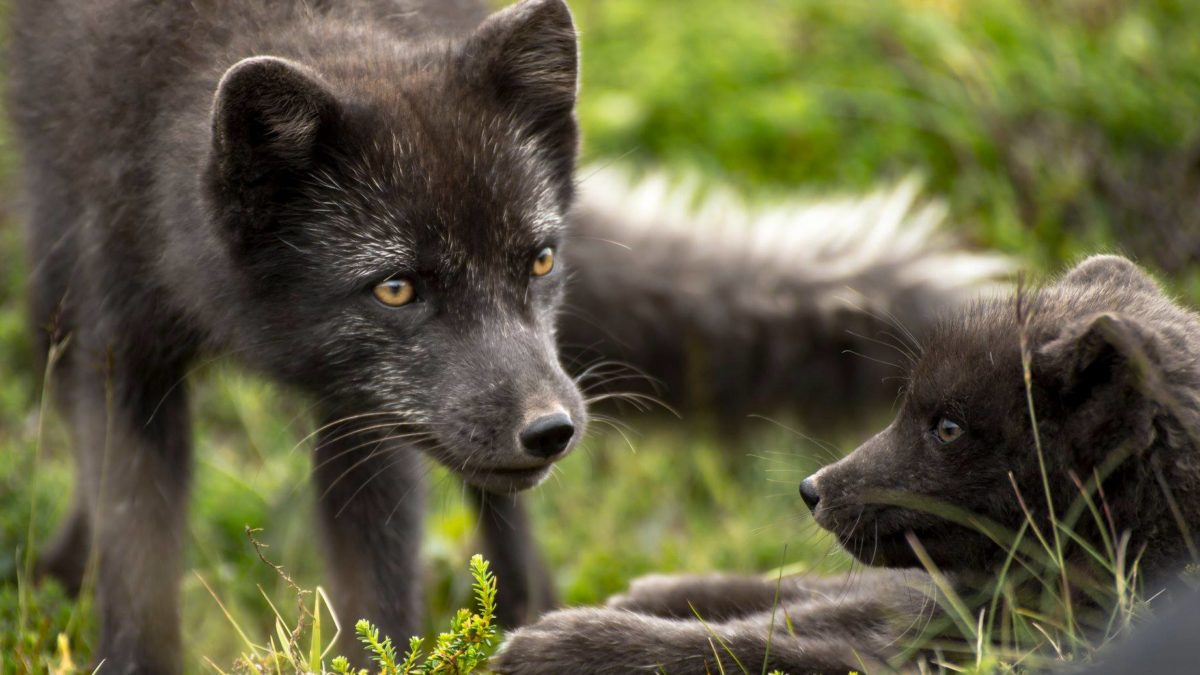
Arctic Fox mum and son
Social behavior
Fox territories are generally exclusive to other pairs unless the food is very abundant. There is usually one burrow per territory and it is used almost exclusively during the breeding season.
Meeting an Arctic Fox
It’s very difficult to meet a wild fox. They are very shy and hunted so it’s generally very stealthy.
There are some laws about the approach of the foxes at the denning season and you will find a guideline for a responsible foxwatching following this link.

Daily inspection of the territory
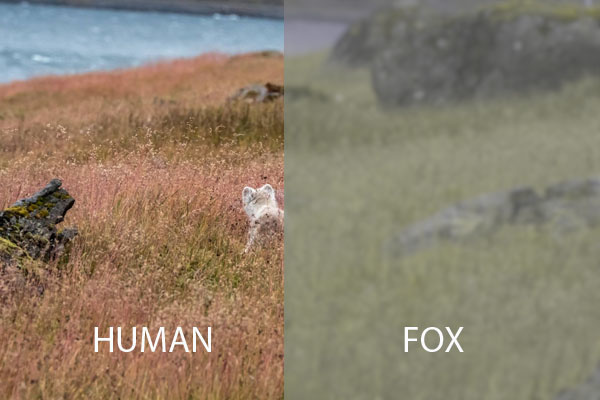
Arctic Fox vision
Arctic Fox vision
The Arctic Fox vision is achromatic that is said that the red color become a kind of green and very bad. He has a good sensibility at low light. We have developped a tool to simulate the arctic fox vision, you can find it here.
